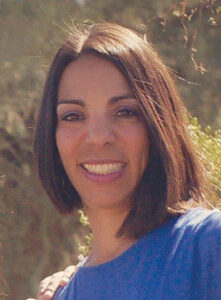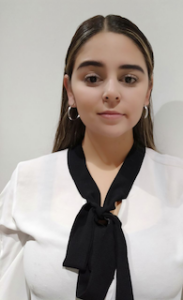Estefania Fong Garcia

This edition of the Power Women series features, Estefania Fong Garcia. Estefania was born and raised in Guaymas, Sonora, Mexico. Throughout elementary and secondary schooling, she consistently achieved excellent grades in all subjects, including math and science. Since she is very fond of children, she aspired to become a teacher. Estefania explained that during her preparatory, or high school, education, she focused on classes for students planning to attend college within the scientific/mathematical field. Commonly in Sonora, students choose their fields of interest and select course agendas to complement their interests to prepare them for college or work in that field. Since she intended to teach math or science, the curriculum for a teacher in these subjects was also relative to the coursework for students intending to pursue engineering. As a youth, however, she had many conversations with her aunt, who has an engineering degree and works at a wire harness company. Her aunt continued to expose Estefania to engineering, often sharing work activities, experiences, and challenges. By the time that Estefania was ready to enter college, her aunt successfully provoked the engineering interest in Estefania. Not only did Estefania find engineering and problem-solving interesting, she also had so much admiration for her aunt that she desired to follow in her aunt’s footsteps.

Deviating from the original plan to study teaching, Estefania enrolled in the Industrial Engineering Program at the Universidad Interamericana de Guaymas, a private college located in her hometown. As with many engineering programs in Mexico, her program was a 3-year format, attending the full year (no summer break). During her first 2 years, she worked evenings with her mother selling lottery tickets at a stand in town. During her 3rd year of college, Estefania joined St. Clair Technologies, a wire harness manufacturer located in Guaymas, Sonora. Her student experiences at St. Clair Technologies continued to fuel her fire in engineering. She is thankful to have worked for an excellent boss, Leonel Torres, who not only supported her but provoked ideas and challenged her as much as the other male students. She also appreciated the company, as it not only focused on corporate performance and financials, but also had a strong emphasis on employee satisfaction and growth.
Estefania’s first assignment was in the tough environment of production. In this area, her responsibilities were focused on meeting the daily production goals while assuring high-quality wire harnesses. She participated in continuous improvement activities to reduce waste and improve efficiency. She collected data to report downtime and scrap, then worked with the management team to utilize the reports for improvement purposes. She was also responsible for working with management to ensure that the employees followed their work instructions and safety protocols.
After graduating, Estephania continued to work for St. Clair Technologies until she received an opportunity to follow her previous boss to a newer, female-owned wire harness manufacturer, Jana Diversity Solutions (J-Dī). Since J-Dī and St. Clair Technologies have a strategic partnership whereby J-Di began to produce harnesses that were not an optimal fit for the St. Clair strategic sales plan, Estefania was a strong candidate for the products and environment at J-Dī. Once in the role of Process Engineer, she began to focus on new product launches. Her assignments included installation of new build areas encompassing line balancing and process flow, while minimizing necessary build space. She coordinated the construction of new assembly fixtures, implemented lean techniques, and employed continuous improvement methodologies. She also strengthened and further applied her knowledge of IATF-16949, Six Sigma, and core tools.
After nearly two years in the role, she was promoted to Process Engineering Supervisor. She now performs the various process engineering responsibilities, but also focuses on developing and supporting her team. She has significant exposure to the top levels of her company, where she and her team often present highlights of continuous improvement and cost-mitigating activities.
When I asked Estefania about her collegiate experience, she advised that of 23 graduating seniors in her field—only 3 were female. However, she did not experience any negativity, nor did she feel excluded due to being female. Along with maintaining a job, Estefania was also an event coordinator at the school for two years and interacted with other females through those activities. Once joining St. Clair along with 9 other students in engineering, she was one of 2 females. Again, she touts that she had a very supportive boss who did not treat the women any differently from the men and provided them all with excellent guidance and growth opportunities. Estefania was smart enough and tenacious enough to make the most of her opportunity!
Also, in talking with Estefania, I noted that she was raised by a single mother who did not have a prominent or high-paying career. Her mother felt bad that Estefania had to work through school and at a young age. However, she developed a hard-work ethic and overcame all obstacles, creating her own success story. As a Hispanic female, she is atypical and a member of an underrepresented group in engineering. If she could choose a career again, she would select the same path and advises others to consider engineering, as well. The opportunities are endless and there is so much pride in breaking the paradigm of male engineers, especially in machismo Mexico.






























































